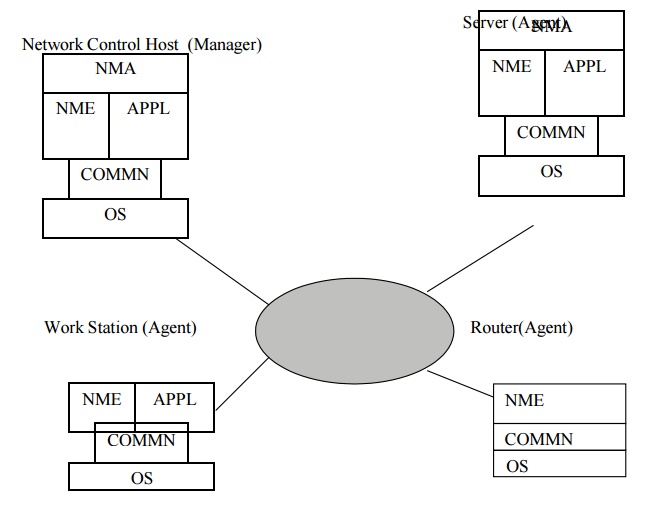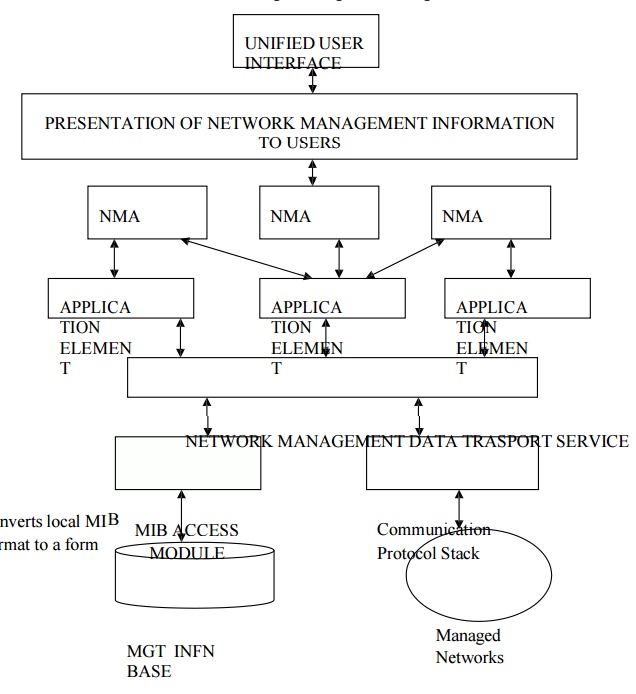Chapter: Network Programming and Management : Simple Network Management
Network Management System
Network Management System:
A
Network Management System is a collection of tools (hardware and software) for
network monitoring and control. It is the incremental hardware and software
additions implemented among the existing network components. The software is
used in accomplishing the network management tasks residing the host computers
and communication processors ( bridges, routers, front end processors, cluster
controller terminals etc)
Network Management Configuration:
The architecture of the network management
system is shown in the next page.
Each node contains a collection of software
devoted to the network management tasks referred as NME – Network Management
Entity. Each NME performs the following tasks:
•
Collect
statistics on communication and network related activities.
•
Store
statistics locally
•
Respond
to commands from the network control
center, including commands to :
o Transmit collected statistics to the network
control center o Change parameter
o Provide status information (parameter values.
Active links etc)
o Generate artificial traffic to perform a test.
p Send message to the network control center when
local conditions undergo significant change.
At least one node in the network is designated
as the network control host, or manager. IN addition to NME, the network
control host includes a collection of software called network management
application (NMA). NMA includes operators interface to allow an authorized user
to manage the network. NMA responds to user commands by displaying information
and / or by issuing commands to NME through the network. This communication is
carried out through an application level network management protocol that
employs the communication architecture in the same fashion as any other
distributed application.

NMA : Network Management Application; Appl: Application;
NME Network Management Entity ; Comm
: Communication software ; OS Operating System.
Important points to remember are:
•
Network
Management software relies on the host operating system and on the
communication architecture.
•
Network
Control Host communicates with and controls the NMEs in other systems.
•
For maintaining
high availability on the network management functions, two or more network
control hosts are used. One may be collecting statistics or even idle where as
other may be used for control. IF the primary network fails, the back ups
system can be used.
Network
Management Software Architecture can be divided into three
broad categories;
User Presentation software:
Interaction between user and NM Software takes
place across user interface. Such interface allows the manager to monitor and
control the network
Such interface has to unified user interface at
any node regardless of vendor.
•Network Management Software:
This normally consists of three layers. Top
layer consists of collection of network management application that provide the
services of interest to users – like fault management, configuration
management, performance management and security
• The small number of network management
applications is supported by a larger number of application elements. There are
the modules that implement more [primitive and more general purpose network
management functions such a as generating alarms summarizing data etc. The
application elements implements basic tools that are of use tone or more of the
network management applications.
• Lowest level of management specific software
is a network management data transport service. This module consists of a
network management protocol used exchange management information among managers
and agents and service interface to the application elements

Related Topics